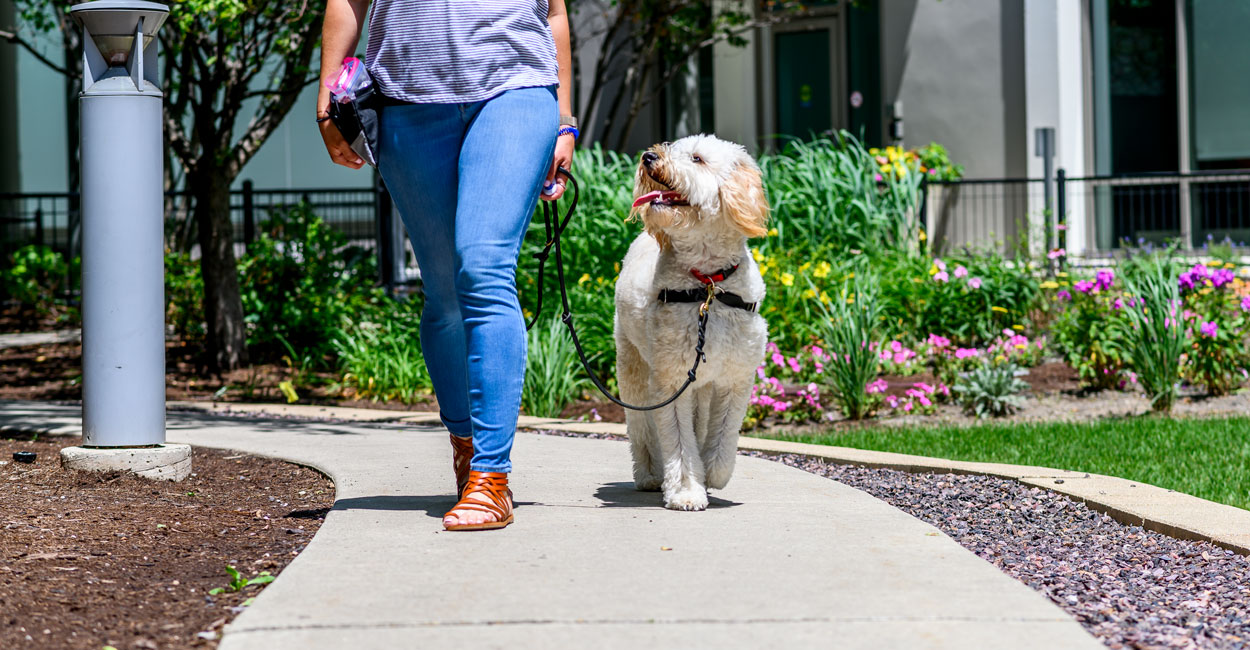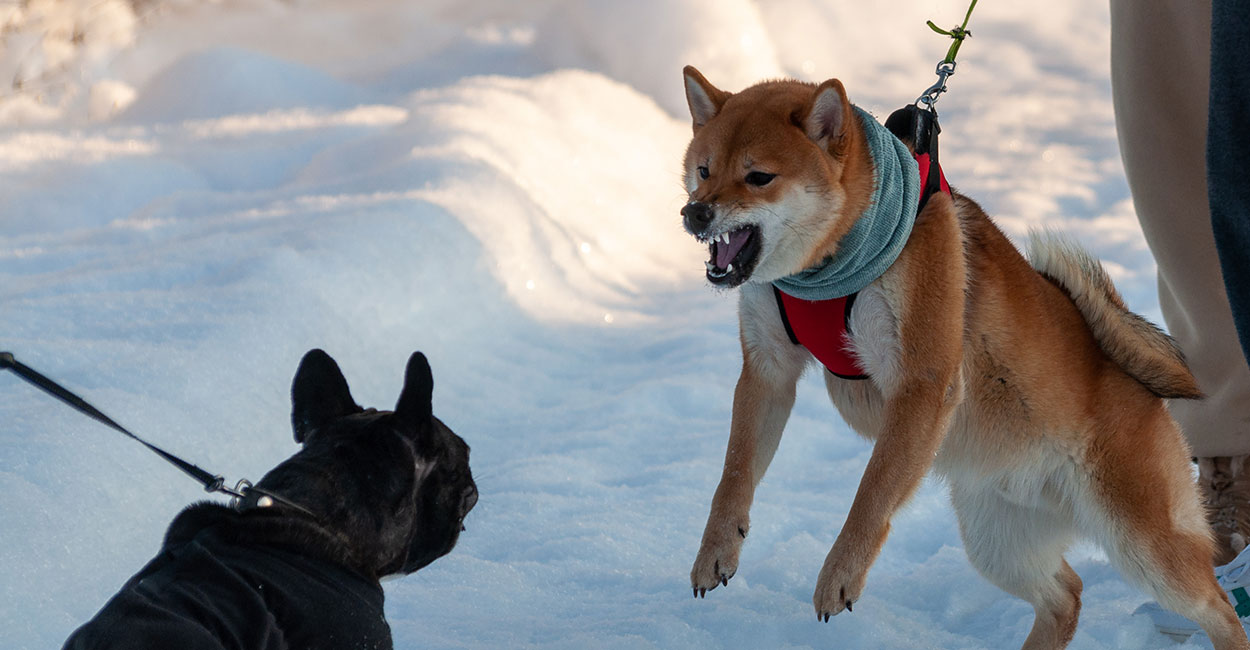
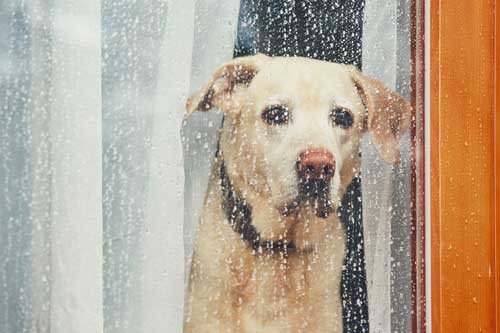
Our comprehensive behavioral dog training program specializes in resolving complex issues including leash reactivity, separation anxiety, resource guarding, and fear-based aggression through proven positive reinforcement techniques. We offer personalized one-on-one sessions at your home or our facility that are designed to address your dog's specific behavioral challenges. Our certified trainers work exclusively with reward-based methods, building your dog's confidence while teaching alternative behaviors that replace reactive responses. Rather than relying on intimidation or punishment, we focus on understanding the root causes of behavioral issues and developing customized training plans that create lasting positive changes. Through consistent, science-based approaches, we help dogs overcome their fears and develop healthier coping mechanisms for a more balanced, happy life.
Behaviors We Can Address in this Program
- Leash reactivity
- Resource guarding
- Separation anxiety
- Stranger danger
- Guest anxiety
- Barking
- Human aggression
- General fears or anxiety
- And more
If you don't see the behavior you are trying to address, just ask us.
We also help with any type of manners training, such as walking on a loose leash, recall, and more. Visit our Training Overview page for more options.
Positive Reinforcement Methods
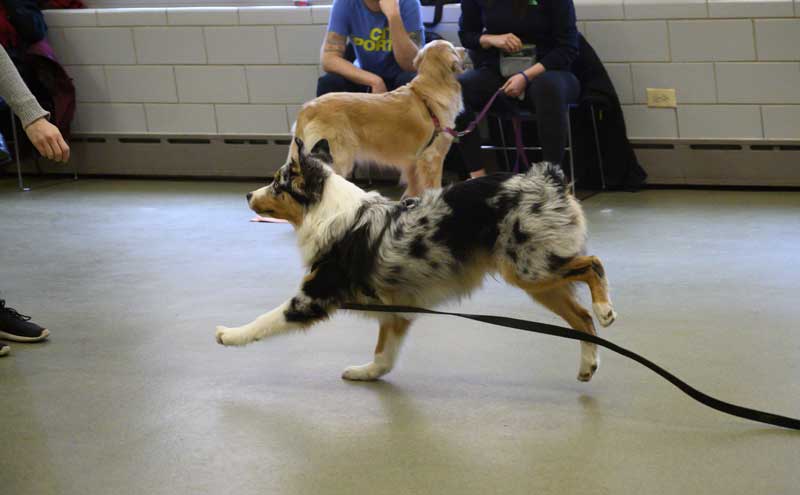 Tucker Pup's only uses positive reinforcement methods. We do not use prong collars, choke chains, shock collars, poking, yelling, leash popping, or other aversive methods. Dominance can easily cause your dog to distrust you, and to only comply in order to avoid a negative outcome. This isn't truly learning, and can cause your dog's behaviors to become much worse.
Tucker Pup's only uses positive reinforcement methods. We do not use prong collars, choke chains, shock collars, poking, yelling, leash popping, or other aversive methods. Dominance can easily cause your dog to distrust you, and to only comply in order to avoid a negative outcome. This isn't truly learning, and can cause your dog's behaviors to become much worse.
Positive reinforcement is much more effective for creating long-term learning and a stronger relationship with your dog. Dogs love training when this style is being used, are much more responsive to their owners, and are much happier in general. In short, positive reinforcement gives you the best chance of success, and can be the fastest way to get results. If you are hesitant, please trust us on this one and feel free to ask us questions.
Positive reinforcement combines an encouraging tone of voice, clear instruction, relaxed body language, the use of rewards (e.g., treats, favorite toy), patience, and empathy.
If you are concerned about giving treats, keep in mind that they work very well for most dogs, you can phase them out at your discretion, and it is possible to use something else that your dog values, such as a favorite toy.
Included in the Program
- Dog Diagnostic: We can conduct a Dog Diagnostic where we observe the behavior, ask you questions, and analyze your home environment. If you live within our travel boundaries, your trainer will come to your home to analyze factors that may be impacting your dog's behaviors. If you live too far away, you can come to our Training Center, we can use Zoom or similar tool to get a sense of your dog's home situation, or you can create a video that we review together.
- Training Sessions: We will have regular meetings to discuss your dog's behaviors and our recommended strategies. In our sessions, we will be working with your dog on situations and strategies that are geared towards resolving the behavioral challenges.
- Home Exercises: We will give you home exercises to work on, so your dog can learn through repetition.
- TrainTrack™: you will have access to TrainTrack, our proprietary online system for accessing your homework exercises, videos, handouts, and a documentation of our recommendations. You can access TrainTrack from any device including your mobile phone.
- Logging Tools: We will give you tools for logging your progress at home. This can be very helpful for spotting trends or identifying factors that are impacting your dog's behaviors.
- Video Analysis: Throughout the program, you can upload videos to us of your dog exhibiting the behaviors, and your trainer can analyze them in order to give you feedback.
- Post-Training Checkins: You can have multiple checkins over Zoom, a phone call, or meeting at our facility for up to a year after the program ends, to ask questions and confirm that you are on the right path.
Positive Reinforcement Only
We only use positive reinforcement to achieve results. This means we desensitize your dog through rewards and praise, in order to create repeatable behaviors such as self-control and self-soothing. Our methods are based on science, are used worldwide, and can work wonders. We do not use shock collars, prong collars, choke chains, yelling, and other negative methods, which can typically make the situation much worse. Think about it: if you were afraid of snakes, do you want someone to help you get over your fear, or just yell at you to not be afraid anymore?
Location
The location is customizable, depending on your dog and situation.
We can work at our training facility, at your home (if you live within our travel boundaries), or a combination of both. Our training facility is located at 1046 W Fulton Market, Chicago, IL. This is in the West Loop, around the corner from our pet resort.
Working in our training facility has many advantages. For example, we have equipment such as cones and different walking harnesses, multiple private lesson rooms, different treats, other dogs and people who could be involved in a session, and more.
Pricing and Payment
- The overall price for our Behavioral Modification programs depends on how many lessons we provide, and whether we work at your home or our facility.
- Contact us to receive a customized quote.
- You can try a lesson before moving on with the entire program.
- You can pay over time.
- You could pay with PayPay Credit, enabling you to pay the balance in six months with zero interest, then monthly payments after that if necessary. You can easily apply through our website and gain acceptance from PayPal in a matter of seconds.
- We can receive payment by credit card, cash, or check.
FAQs
How long will it be until I see results?
The answer to that question depends on you and your dog. Some dogs take longer than others, possibly due to a traumatic past, genetics, the way their brain is wired, their lack of trust in you, and other factors. If you practice our exercises and follow our daily recommendations, you will have the best chance of success. The journey will only be longer if you wait to get started, because the more a dog practices a behavior, the harder it is to untrain later. The trainer will normally conduct a Dog Diagnostic and create a plan to give you a sense of how long it may take for your particular dog. With behavioral modification, the change is not necessarily quick, but with the right approach, the results can be life-altering and long-term.
Is it better to train at my home or at your facility?
That depends on your dog. By coming to your home, the trainer can see the environment and what may be triggering the behavior, then make recommendations to create immediate improvement. On the other hand, the trainer coming to your home could trigger your dog, and coming to our facility might be more advisable, especially since we have the tools and resources readily available such as cones, barriers, stuffed dogs, other dogs and people, numerous types of treats, and so forth. The trainer may also recommend a mix of both locations. It all depends on what you are trying to accomplish and which environment is best-suited for your particular dog.
We worked with a previous trainer from somewhere else, and the behaviors either didn't improve or got worse. Why would this be any different?
Other trainers may use aversive techniques such as shock collars, prong collars, choke chains, yelling, poking, and dominating. These methods are outdated, cause your dog to distrust you, and can cause long-term damage to your dog's behaviors and psyche. In addition, other trainers may not have the skills, talent, or expertise that our trainers have, plus may not have had you practice the proper exercises that would be effective for your particular dog. Further, our TrainTrack system helps organize all of the exercises, recommendations, and other information, plus has tools for logging your progress. We know that our system works very well for most dogs - how well depends on you and your dog.
What if my dog doesn't respond to treats?
Treats are often the best way to motivate a dog. However, if a dog is in a total state of panic, he will likely not respond to treats or any other types of rewards. In this instance, the first step is to calm down his brain to a level where he can think and possibly become more responsive to treats. In addition, we use high-reward treats that many dogs can't resist, and that work much better than low-value treats. If the trainer and you decide that treats aren't working or appropriate, other rewards can be used such as a favorite toy or activity.
Can we work together over Zoom?
Normally it is best to work together in person, but Zoom can also be effective in certain circumstances. For example, it may be advisable if your dog has severe reactions when people come to your home, or can't come to our facility due to anxiety. Also, some lessons may be more informational or even answering all of your questions, and if there co-owners of the dog, it can be helpful if both people are on a Zoom call. We also conduct checkin meetings through Zoom quite often.
What if I believe my dog may bite the trainer or is otherwise a risk?
If you believe the trainer is at risk of getting bitten, you must inform us of that right up front, without hesitation. In addition, we would need to follow certain safety protocols, such as having your dog wearing a muzzle. The trainer will discuss these protocols with you, and they must be strictly followed, for the safety of our staff and you.
If I already use a prong collar / choke chain / shock collar, can I keep using it during the program?
We cannot make progress with these tools, which are ineffective and outdated. They can cause your dog to distrust you, and can be a real impediment to progress. We will be showing you to achieve a new relationship with your dog without resorting to tools such as these, and instead embracing positive reinforcement methods that are force free. Trust us on this - we have changed thousands of dogs using positive methods, and have found that aversive methods only create short-term behaviors based on avoiding a negative outcome, but not long-term learning.
I don't think my dog is trainable.
Every dog is trainable with the right approach. If you follow our recommendations and practice our exercises, plus stay committed to positive reinforcement, you should start to see improvement. It's worth a try, and your dog will likely surprise you once you start learning how to connect with him on a new level.
Our Travel Radius
One of our trainers can home to your home if you live within our travel radius. We routinely go all throughout Chicago each day, including to Lakeview, Lincoln Park, Bucktown, Wrigleyville, Gold Coast, River North, downtown, East Loop, West Loop, South Loop, and all neighborhoods in between.
These boundaries go north to Irving Park Road, east to the lake, south to Roosevelt, and west to Western Avenue.
If you live a few streets beyond these boundaries we can likely still come to your home.
Otherwise, you would need to come to our training facility.
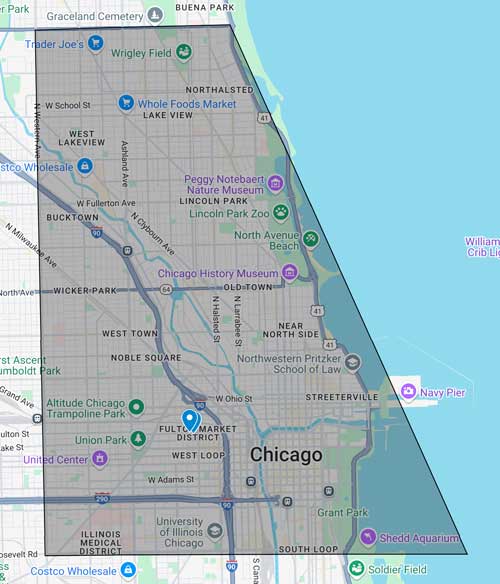
Our Trainers Travel All Over Chicago
Featured Trainer
Shaina Norton, CPDT-KA
Dog Trainer
Shaina has been so so so helpful to us in figuring out the best path for Uno. Her tips and tricks for his behavioral issues have been so helpful to us, and overall she has given us great advice throughout the last couple weeks. We plan to book another turnkey training package with Shaina after the holidays as we know our dog Uno loves her and we have seen tremendous progress for Uno with her help so far. We can tell she really cares about the well-being of not only our pup but also us!
- Zoe Philips
TrainTrack™ Online Portal
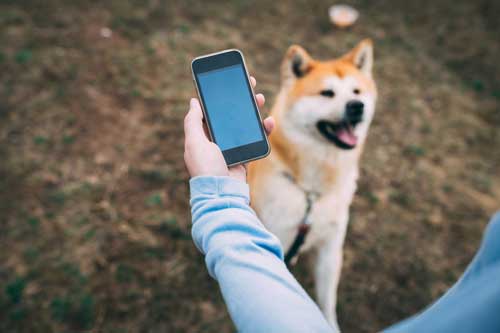
Re-Watch Training Exercises on Your Device
The trainer will show you the exercises in person, then you can access TrainTrack to see the homework and other helpful information. Many exercises include videos, and all of them include instructions. It also includes handouts and a documentation of what you covered. This is incredibly helpful because there is a lot of information to take in, and it can be hard to remember everything that was demonstrated and discussed.
In addition, you can log your progress on TrainTrack as you are working on your home exercises. This can be invaluable for ensuring that you spend enough time, in various settings, for your dog to learn the methods thoroughly.
For private lessons, you can even upload videos to your trainer, and they can watch them in between sessions to help provide advice.
TrainTrack works on any Internet-connected device, so you can use it on your mobile phone, even when you're on a walk or working outdoors.
TrainTrack is used for all of our training services, including private lessons and classes.
To access TrainTrack, you must log in to our website. On your Customer Center, you will see the link to TrainTrack towards the top of the page.
Customer Reviews

Yelp has listed Tucker Pup's as one of the top 100 local businesses in the country in 2025. We are the only pet business who made the list from Chicago, and the only pet resort / training business who made the list nationally.
See the List
Neighborhoods We Serve
Tucker Pup's is located in the West Loop / Fulton Market District neighborhood. People come to us from all over Chicago, especially from Bucktown, Gold Coast, Lake View, Lincoln Park, Old Town, River North, River West, South Loop, Streeterville, Ukrainian Village, University Village, West Town and Wicker Park.
